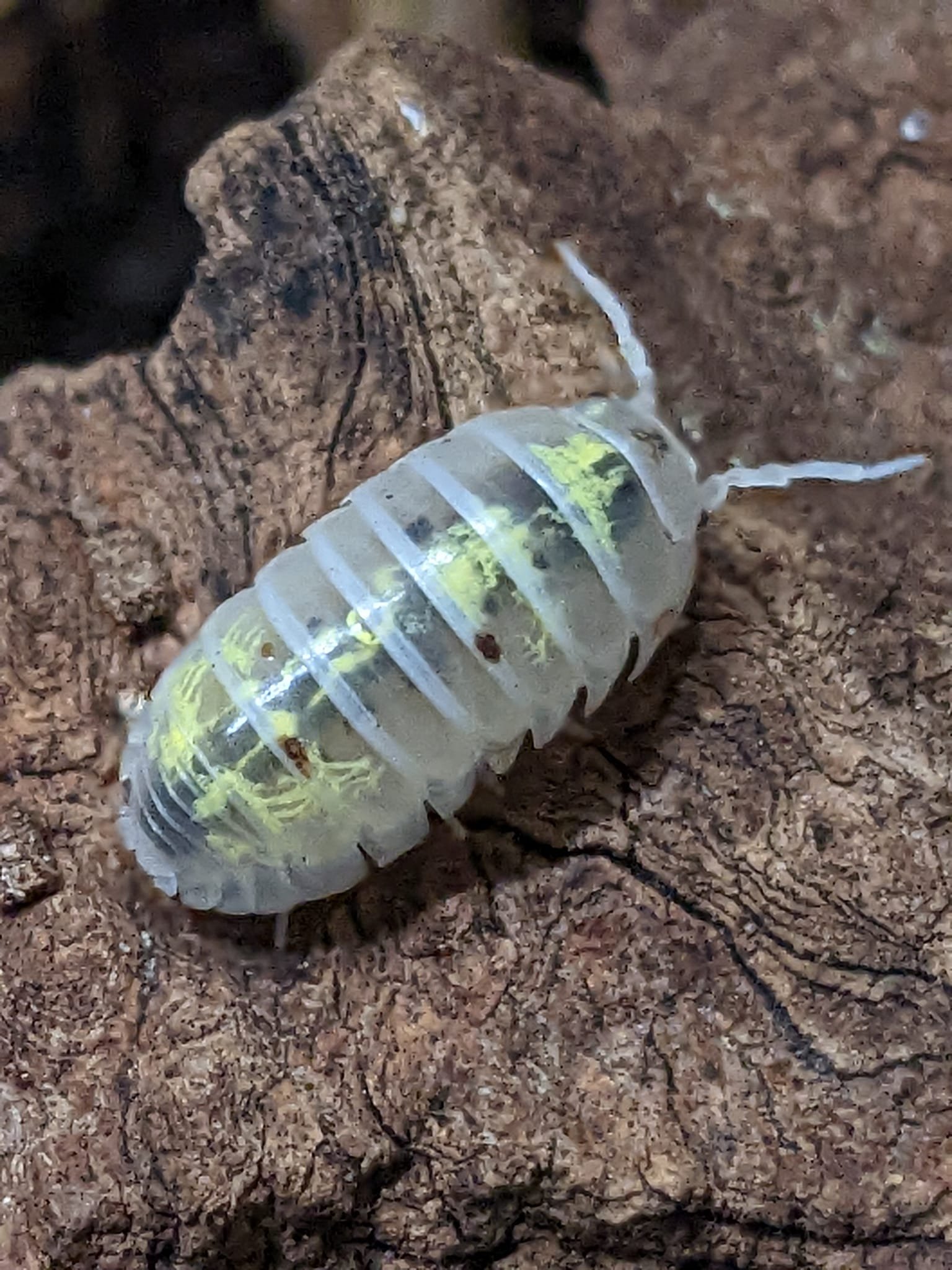
Magic Potion
12 - 15 Count Per Culture
"Magic Potion" isopod! This is a truly striking variety of Armadillidium vulgare, the common woodlouse or pill bug, but with a dazzling twist. Here's what makes them so special:
Appearance:
Coloration: Magic Potion isopods are celebrated for their unique and vibrant coloration. They typically display a base color of black or dark brown, dramatically contrasted with bright yellow or orange spots and markings. This striking pattern gives them a truly magical and eye-catching look.
Size: They are a medium-sized isopod, reaching about 1-2 centimeters in length.
Shape: Like other Armadillidium species, they have a rounded, oval-shaped body that allows them to curl into a tight ball when threatened – a classic "roly-poly" defense mechanism.
Habitat and Care:
Origin: While Armadillidium vulgare is widespread, the "Magic Potion" variety is a captive-bred morph, meaning it was selectively bred for its unique coloration. There are both American and Japanese lines, each with subtle differences in appearance.
Environment: They thrive in a semi-arid to temperate environment.
Temperature: They prefer temperatures between 60-80°F (15-27°C).
Humidity: They need moderate humidity levels. A good approach is to have a slightly moist area in their enclosure alongside a drier section.
Substrate: A mix of damp soil, leaf litter, and decaying wood provides an ideal substrate.
Enclosure: A well-ventilated container with plenty of hiding spots (cork bark, leaf litter, etc.) is essential.
Other Characteristics:
Temperament: They are generally peaceful and easy to handle.
Breeding: The Japanese line of Magic Potion isopods is known for being more prolific breeders than the American line.
Lifespan: With proper care, they can live for several years.
Bioactive Clean-up Crew: They are a popular choice for bioactive terrariums, where they help break down organic waste and contribute to a healthy ecosystem.
Important Notes:
Variations: Due to their genetics, each Magic Potion isopod is somewhat unique in its pattern and coloration.
Availability: They are relatively easy to find from reputable breeders and online suppliers.
Price: They tend to be more expensive than common isopod species due to their unique appearance and popularity.
12 - 15 Count Per Culture
"Magic Potion" isopod! This is a truly striking variety of Armadillidium vulgare, the common woodlouse or pill bug, but with a dazzling twist. Here's what makes them so special:
Appearance:
Coloration: Magic Potion isopods are celebrated for their unique and vibrant coloration. They typically display a base color of black or dark brown, dramatically contrasted with bright yellow or orange spots and markings. This striking pattern gives them a truly magical and eye-catching look.
Size: They are a medium-sized isopod, reaching about 1-2 centimeters in length.
Shape: Like other Armadillidium species, they have a rounded, oval-shaped body that allows them to curl into a tight ball when threatened – a classic "roly-poly" defense mechanism.
Habitat and Care:
Origin: While Armadillidium vulgare is widespread, the "Magic Potion" variety is a captive-bred morph, meaning it was selectively bred for its unique coloration. There are both American and Japanese lines, each with subtle differences in appearance.
Environment: They thrive in a semi-arid to temperate environment.
Temperature: They prefer temperatures between 60-80°F (15-27°C).
Humidity: They need moderate humidity levels. A good approach is to have a slightly moist area in their enclosure alongside a drier section.
Substrate: A mix of damp soil, leaf litter, and decaying wood provides an ideal substrate.
Enclosure: A well-ventilated container with plenty of hiding spots (cork bark, leaf litter, etc.) is essential.
Other Characteristics:
Temperament: They are generally peaceful and easy to handle.
Breeding: The Japanese line of Magic Potion isopods is known for being more prolific breeders than the American line.
Lifespan: With proper care, they can live for several years.
Bioactive Clean-up Crew: They are a popular choice for bioactive terrariums, where they help break down organic waste and contribute to a healthy ecosystem.
Important Notes:
Variations: Due to their genetics, each Magic Potion isopod is somewhat unique in its pattern and coloration.
Availability: They are relatively easy to find from reputable breeders and online suppliers.
Price: They tend to be more expensive than common isopod species due to their unique appearance and popularity.
